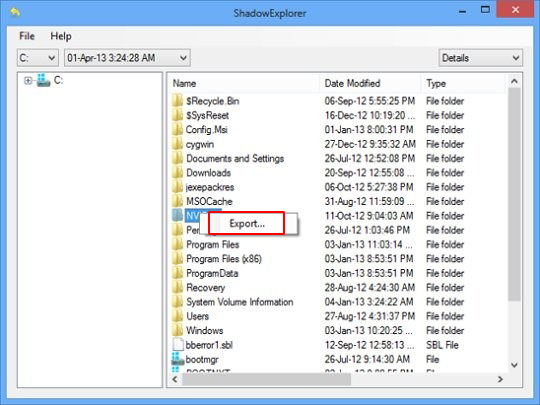Table of Contents
Learn how the [email protected] ransomware manifests itself on a computer and get an efficient workaround to decrypt the scrambled .bip extension files.
No matter how sentimental and touching the phrase .bip may sound, it designates the name of an HTA application used by a truculent ransom Trojan. The parental contagion is called the DHarma, or Crysis, ransomware. This Delphi-based intruder sprinkles the above-mentioned ransom notes all over the computer that it infects. A copy of Info.hta file will definitely be created on the desktop as well as inside all folders the contents of which were subject to encryption. Other than the cartoonish warning interface (see screenshot below), the perpetrating program under consideration is fairly mundane. It utilizes a rather strong cryptographic standard to lock down a victim’s important files. These entries are easy to tell from the unaffected ones as they all have the .bip extension.
![[buydecrypt@qq.com] - .bip file ransomware](https://keonesoftware.com/wp-content/uploads/buydecrypt@qq.com_.jpg)
The Trojan concatenates this string to the original full filenames. For instance, it will transform a sample PowerPoint presentation named Flowchart.pptx into Flowchart.pptx.bip. Earlier versions of this ransomware used the .pegs1, .rare1, .mrcr1, or .rmcm1 extension. Appending certain characters to skewed files is common practice with data-encrypting maladies, providing a unique, fingerprintable attribute that allows differentiating one strain from another.
.BIP virus contaminates computers via spam. The campaign circles around the use of emails with malicious JavaScript or EXE files on board. The attackers may leverage a double extension trick, where a harmless-looking PDF document is actually an obfuscated executable. The themes of these emails are catchy enough to encourage recipients into opening the attachments. For instance, it may be a fake consumer complaint notification from the Federal Trade Commission, a receipt, or a cancellation request that requires urgent action by the user. Once the booby-trapped file is loaded, [email protected] ransomware stealthily hops inside the system and starts looking for potentially valuable data. Everything it finds then gets encoded with a custom cryptosystem and stained with the .bip extension. The next phase is to let the victim know why they cannot access their photos, documents, videos and other personal data entities.
The Info.hta application displays the warning proper, the time left before the decryption key is erased, and the malefactors’ contact details. The latter part includes the [email protected] email address and the @buydecrypt Telegram ID. By getting in touch with the bad guys, a victim will learn the amount of Bitcoin they need to send for recovery, the BTC wallet address, and the actual decryption steps to follow after the ransom has been submitted. Of course no one is willing to go through the painful buyout process. Luckily, the instructions below may allow those infected to avoid the worst-case scenario with the .bip ransomware.
Automatic removal of .bip file virus
When it comes to handling infections like this one, using a reputable cleaning tool is the place to start. Sticking to this workflow ensures that every component of the adware gets found and eradicated from the affected computer.
1. Download and install the cleaning tool and click the Start Computer Scan button Download .bip removal tool
2. The wait is worth it. Once the scan completes, you will see a report listing all malicious or potentially unwanted objects detected on your PC. Go ahead and click the Fix Threats option in order to get .bip automatically uninstalled from your machine. The following steps are intended to restore the encrypted files.
Recover files ciphered by the [email protected] ransomware
Removing the infection proper is only a part of the fix, because the seized personal information will stay encrypted regardless. Review and try the methods below to get a chance of restoring the files.
Option 1: BackupsThe cloud works wonders when it comes to troubleshooting in the framework of ransomware assault. If you have been keeping data backups in a remote place, just use the respective feature accommodated by your backup provider to reinstate all encrypted items.
Option 2: Recovery toolsThe research of .bip virus reveals an important fact about the way it processes the victim’s data: it deletes the original files, and it’s actually their copies that are encrypted. In the meanwhile, it is common knowledge that anything erased from a computer doesn’t completely vanish and can be dragged out of memory via certain techniques. Recovery applications are capable of doing this, so this method is surely worth a try.
Option 3: Shadow CopiesThe Windows operating system incorporates a technology referred to as the Volume Snapshot Service, or VSS, which performs files or volumes backup routine automatically. One critical prerequisite in this regard is to have the System Restore feature toggled on. In case it has been active, some data segments can be successfully recovered.
You may perform this activity with the Previous Versions functionality, which is built into the OS, or by means of special applications that will do the job automatically.
-
Previous Versions feature
Right-click on a file and choose Properties in the context menu. Find a tab named Previous Versions and click on it to view the last automatic backup that was made. Depending on a preferred action, click Restore to get the file recovered to its original location, or click Copy and indicate a new directory.

-
Shadow Explorer applet
It’s remarkably easy to manage Previous Versions of files and folders with automated tools like Shadow Explorer. This program is free to use. Download and install it, let it come up with a profile of the file hierarchy on the computer, and get down to the restoration proper. You can select a drive name on the list, then right-click on the files or folders to recover, and click Export to proceed.

Did the problem go away? Check and see
Computer threats like ransomware may be stealthier than you can imagine, skillfully obfuscating their components inside a compromised computer to evade removal. Therefore, by running an additional security scan you will dot the i’s and cross the t’s in terms of the cleanup.



